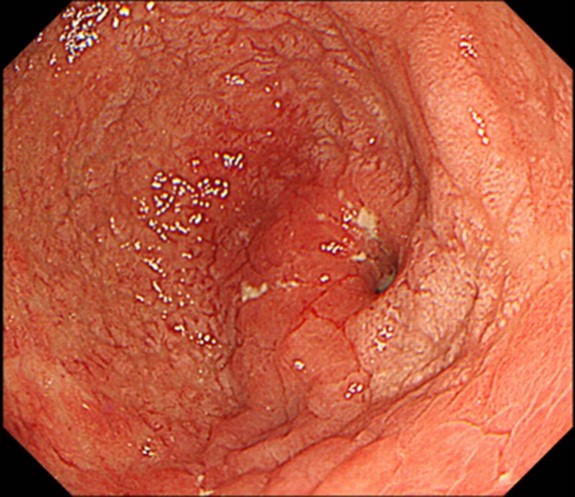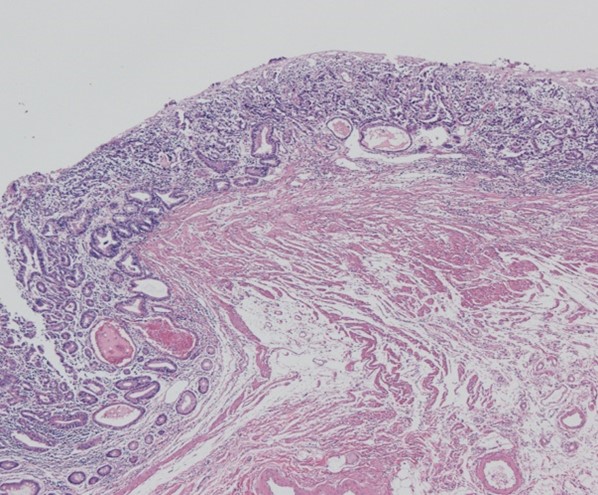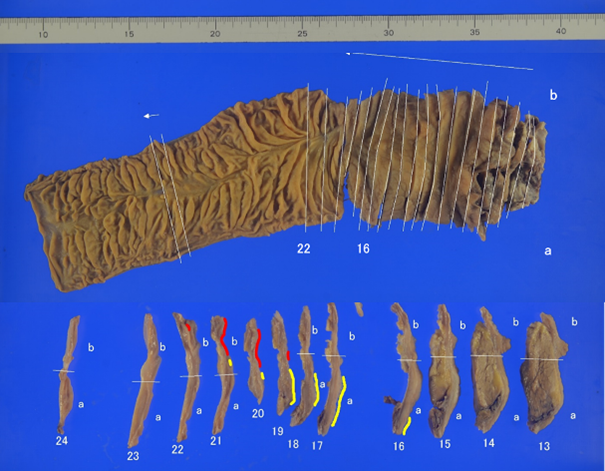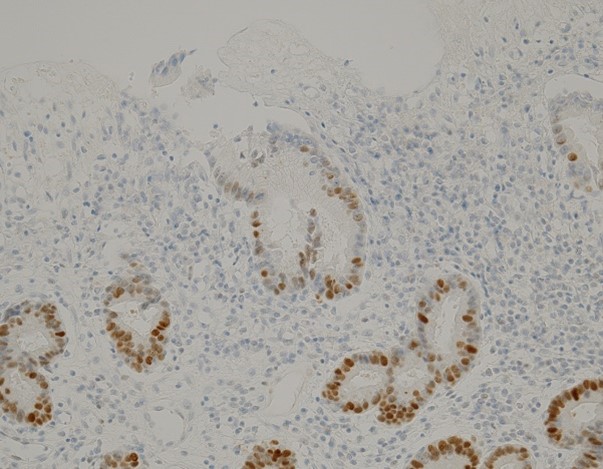Case report
A Case of Duodenal Cancer in a Patient with Prolonged Crohn's Disease
- Tetsuro Miyazaki MD 1
- Yuko Sakakibara MD 1*
- Shoichi Nakazuru MD 1
- Eiji Mita MD, PhD 1
- Kiyoshi Mori MD, PhD 2
1Department of Gastroenterology and Hepatology, National Hospital Organization Osaka National Hospital, Osaka, Japan.
2Department of Pathology, National Hospital Organization Osaka National Hospital, Osaka, Japan.
*Corresponding Author: Yuko Sakakibara, Department of Gastroenterology and Hepatology, National Hospital Organization Osaka National Hospital, Osaka city, Japan.
Citation: T Miyazaki, Y Sakakibara, S Nakazuru, E Mita, K Mori. (2022). A case of duodenal cancer in a patient with prolonged Crohn's disease. Clinical Case Reports and Studies. 1(1); DOI: 10.59657/2837-2565.brs.22.003
Copyright: © 2022 Yuko Sakakibara, this is an open-access article distributed under the terms of the Creative Commons Attribution License, which permits unrestricted use, distribution, and reproduction in any medium, provided the original author and source are credited.
Received: October 01, 2022 | Accepted: November 09, 2022 | Published: November 14, 2022
Abstract
The incidence of colorectal and small bowel cancers associated with CD development is often accompanied by chronic active inflammation at the site. Although the duodenum can be accessed easily during endoscopy, it is challenging to diagnose malignant transformation prior to the surgery. Early diagnosis of CD-associated cancers is necessary.
Keywords: crohn’s disease; duodenal cancer; esophagogastroduodenoscopy
Introduction
Case Report
A 55-year-old woman was treated for Crohn's disease (CD) for more than 30 years. Ten years ago, she was diagnosed with duodenal stenosis related to CD on the distal side of the vater papilla, 3 cm in the descending duodenum. Biopsy results from the proximal stricture showed inflammatory changes. Endoscopy performed 5 years later revealed redness immediately proximal to a high-grade obstruction of the descending duodenum (Figure 1). Biopsy of the lesion confirmed adenocarcinoma. Chronic inflammation was present at the cancer site, and the boundary between neoplastic and non-neoplastic lesions was unclear. Additionally, a transnasal endoscope was passed through the 1 cm long stenosis, and no other abnormalities were found in the mucosa distal to the stenosis. The patient then underwent a duodenopancreatectomy. Postoperative pathological examination revealed that the lesion was 0-IIc, tub2 > por2, pT1a(M), ly0, v0, pPM0, pRM0, pN0, and p0 (Figure 2). In addition, this examination revealed high-grade adenoma discontinuously adjacent to intramucosal cancer (Figure 3: yellow line), and immunohistochemical analysis detected p53 [removed]Figure 4).
Figure 1: Esophagogastroduodenoscopic image, The descending portion of the duodenum was stenotic, and the surrounding surface mucosa was erythematous.
Figure 2: Histopathological examination of biopsy specimens, (Hematoxylin and eosin stain; original magnification, 40x), This image shown tubular adenocarcinoma with signet ring cell carcinoma, and tumor invasion is confined to the mucosa.
Figure 3: Resection specimen image, The yellow line shown in the image is high-grade adenoma and red line shown intramucosal cancer.
Figure 4: Immunohistochemical examination showed immunopositivity for p53, (Original magnification, 200x).
Discussion
Studies show that the incidence of colorectal and small bowel cancers associated with CD is higher than in the general population due to CD onset at a relatively young age and prolonged duration of the disease[1,2]. Cancer development is often accompanied by chronic active inflammation at the site, and thus it is hypothesized that chronic inflammation of the intestinal tract is closely related to carcinogenesis. Moreover, dysplasia, overexpression of p53 at an early stage, and cancer complications are observed in ulcerative colitis, but the relationship is not clear [3].
Conclusion
The majority of cancers occur in the large intestine, and although the absolute number of small intestinal cancers is small, the relative risk is remarkably high [4]. Upper gastrointestinal tract involvement in CD has been reported to occur in 0.1% of patients with CD [5]. Although the duodenum can be accessed easily during endoscopy, it is challenging to diagnose malignant transformation prior to the surgery because of the presence of chronic inflammation in the background of the cancer site. Many studies report cases of advanced cancer at the time of detection, such as stage IV or lymph node positive cases. Our study suggests that progressive duodenal narrowing and ulceration should be followed up with a careful endoscopic evaluation and biopsy to exclude malignant degeneration of CD. Therefore, early diagnosis of CD-associated cancers is necessary.
Acknowledgements
Author contributions: T. Miyazaki wrote the paper; Y. Sakakibara and
S. Nakazuru contributed to endoscopic diagnosis; T. Miyazaki treated the patient; K. Mori confirmed the pathological diagnosis; and E. Mita supervised the writing of and reviewed the paper.
The lead author: Tetsuro Miyazaki, A Medical Resident.
Disclosure: All authors disclosed no financial relationships relevant to this publication, Informed consent was obtained for this report.
References
- Laukoetter MG, Mennigen R, Hannig CM et al. (2011). Intestinal cancer risk in Crohn’s disease a meta-analysis. J Gastrointest Surg. 15:576-583.
Publisher | Google Scholor - Maykel JA, Hagerman G, Mellgeren AF et al. (2006). Crohn’s colitis: the incidence of dysplasia and adenocarcinoma in surgical patients. DIS Colon Rectum. 49:950-957.
Publisher | Google Scholor - Uesugi H, Mitomi H, Sada M et al. (1999). A case of adenocarcinoma of the small intestine in a Japanese patient with Crohn disease a report with immunochemical and oncogenic analyses. Scand J Gastroenterol. 34:1162-1167.
Publisher | Google Scholor - Canavan C, Abrams KR, J Mayberry et al. (2006). Meta-analysis: colorectal and small bowel cancer risk in patients with Crohn’s disease: Aliment pharmacol Ther. 23:1097-1104.
Publisher | Google Scholor - Pimentel AM, Rocha R, Santana GO. (2019). Crohn’s disease of esophagus, stomach and duodenum. World J Gastrointest Pharmacol Ther. 10(2):35-49.
Publisher | Google Scholor


















